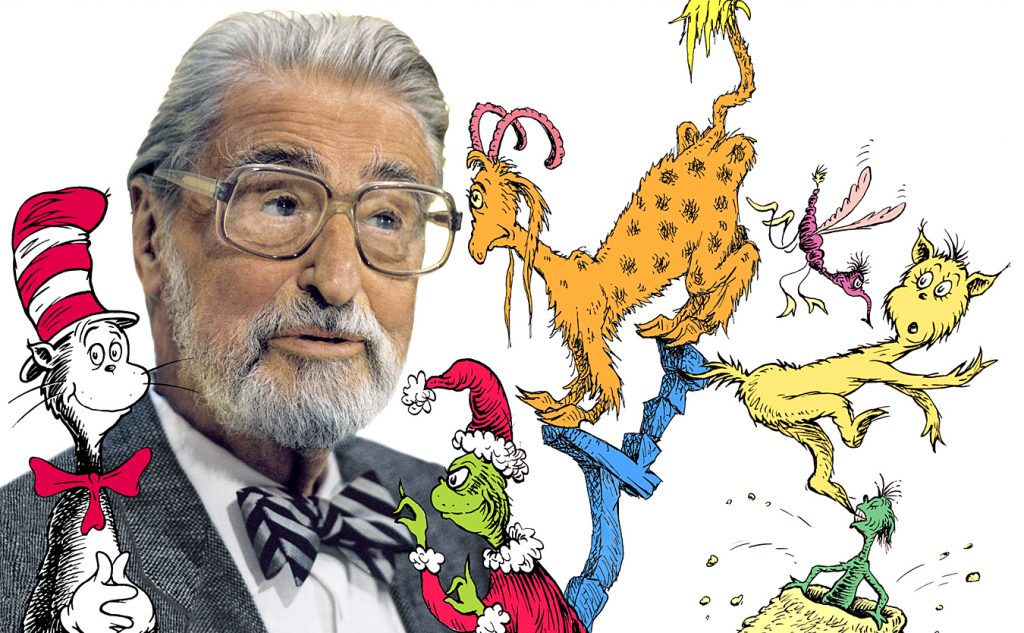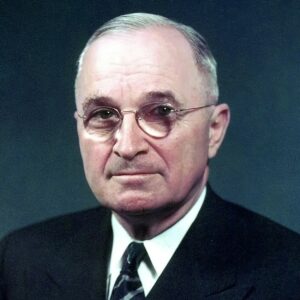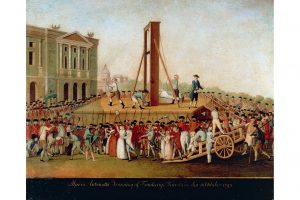Theodor Geisel, beloved children’s author, had a life before he put the hat on the cat. Born March 2, 1904, in Springfield, Massachusetts, Geisel was the only son of German-born immigrants. He spent a normal childhood with his sister and parents, before going to college to become a teacher. Geisel dropped out of college shortly before completing his doctorate in literature. He would eventually turn his almost doctorate and his mother’s maiden name into his now famous pen name, Dr. Seuss.1

In 1927, Geisel decided to turn his passion for drawing and writing into a career in advertising. One of his early successes in advertising was his drawing for Flit insecticide, whose mascot looked very similar to the cat that would eventually wear a striped hat.2 He later created an entire campaign for Essomarine Oil, a division of Standard Oil, called Seuss Navy, in which he designed certificates of membership, pamphlets, and even ashtrays and cocktail glasses that were passed out at trade shows. The Seuss Navy ads ran from 1936 to 1941, and contained many of the sea creatures that would later appear in his books.3 Geisel used many of his made up creatures in various ad campaigns and was the first person to use humor to sell products, altering the advertising industry.4

In 1941, Geisel left advertising to work as a political cartoonist for liberal New York newspaper PM. He drew over 4oo cartoons targeting such topics as isolationism, antisemitism, and racism. He routinely mocked Hitler and Mussolini, but he had a particular flair for attacking American nationalism as well. Believing that the American Nationalist Movement was just another form of fascism, Geisel made Charles Lindbergh a frequent subject of his cartoons.5 After the Japanese attack on Pearl Harbor, Geisel began to use his cartoons to support the war against Japan. He drew cartoons that “depicted Hideki Tojo, the Prime Minister and Supreme Military Leader of Japan, as an ugly stereotype, with squinting eyes and a sneering grin.”6 Geisel was in support of Japanese internment camps and drew several cartoons about them.

It can be hard to imagine that Dr. Seuss could be a racist in his depiction of Asians, but he later admitted that this was exactly the case. At the time, PM did not receive one letter of complaint about Geisel’s stereotypical depiction of Asians, although they received many letters when Geisel mocked the German dachshund, which was popular among American dog owners. Dr. Seuss later said that his 1954 book, “Horton Hears a Who,” written after a trip to Japan and dedicated to a Japanese friend, is meant to be an apology to the Japanese people for his depictions of them during World War II. In the 1980’s, Geisel looked through all his children’s books and removed anything he felt was racist, changing them for any future publication.7
Geisel’s political cartoons ended when he joined the Army in 1943. The now Captain Geisel was assigned to a unit that made training films for the Army, working with the likes of Stan Lee (creator of super heroes) and Chuck Jones (creator of the Road Runner and Wile E. Coyote).8 Geisel and Jones would become life long friends and would work together on various projects, including the animated “How the Grinch Stole Christmas,” which is still shown every year on television.

Geisel’s first children’s book was “And to Think I Saw It on Mulberry Street,” and was published in 1937. However, his writing career almost never happened. The book had been turned down by 27 publishers and Geisel was ready to give up the idea of becoming a children’s author when he ran into an old college friend while walking down the street. His friend had recently become an editor at Vanguard Press and asked Geisel to send him the book so he could show his boss. Geisel would later say in interviews that it was pure luck that he walked down that side of the street that day.9
Dr. Seuss later claimed that he did not like to write books that had a moral or ethical lesson, because children could see a lesson coming and would not want to read the book.10 However, all of Geisel’s books, except his Beginner Books, contained lessons of some sort. Dr. Seuss wrote books with lessons on environmentalism, racial equality, the pointlessness of the arms race, materialism, and respect, just to name a few. He was one of the first children’s authors to write books for children with the respect and care typically reserved for adult literature.11
Dr. Seuss died on September 24, 1991 at his home. He was asked shortly before he passed away to leave a message for children. He wrote “The best slogan I can think of to leave the kids of the U.S.A. would be ‘We can…and we’ve got to…do better than this.’ He then crossed out ‘the kids of.'”12 Dr. Seuss left a legacy of children’s literature that will not soon be forgotten, but he did more than that; Dr. Seuss taught children to think.
- Janet Schulman and Cathy Goldsmith, Your Favorite Seuss (New York: Random House, 2004), 6. ↵
- Louis Menand, “Cat People,” The New Yorker (December 2002). ↵
- Janet Schulman and Cathy Goldsmith, Your Favorite Seuss (New York: Random House, 2004), 55. ↵
- Janet Schulman and Cathy Goldsmith, Your Favorite Seuss (New York: Random House, 2004), 117. ↵
- Sophie Gilbert, “The Complicated Relevance of Dr. Seuss’s Political Cartoons,” The Atlantic (January 2017). ↵
- Sophie Gilbert, “The Complicated Relevance of Dr. Seuss’s Political Cartoons,” The Atlantic (January 2017). ↵
- Sophie Gilbert, “The Complicated Relevance of Dr. Seuss’s Political Cartoons,” The Atlantic (January 2017). ↵
- Janet Schulman and Cathy Goldsmith, Your Favorite Seuss (New York: Random House, 2004), 9. ↵
- Louis Menand, “Cat People,” The New Yorker (December 2002). ↵
- Janet Schulman and Cathy Goldsmith, Your Favorite Seuss (New York: Random House, 2004), 190. ↵
- Janet Schulman and Cathy Goldsmith, Your Favorite Seuss (New York: Random House, 2004), 84. ↵
- Janet Schulman and Cathy Goldsmith, Your Favorite Seuss (New York: Random House, 2004), 190. ↵



125 comments
Aracely Ortiz Soriano
I thought it was really cool that Dr. Seuss wrote “Horton Hears a Who” to apologize for his initial racism towards Asian people. I liked that he went back to all of his children’s books and deleted anything racist that he previously wrote. I thought that it was extremely inspirational that he was just about to give up on his desire to become a children’s author until he coincidentally met his friend from college down the street.
Engelbert Madrid
Dr. Seuss remains to be one of the most influential writers for his creativity in words and art, which many people still analyze. We are fortunate to have a writer like him, because it teaches us that even simple creativity can make a tremendous impact on people’s lives, especially children. Therefore, I’m glad Dr. Seuss’ works were published. This article was well-informative.
Valeria Perez
Growing up I loved reading all of the Dr. Seuss’ books. I had always wondered where the name Dr. Seuss had come from and after reading the introduction I was humored that even though he had not obtained his doctorate degree he still adopted the title. I never knew that Mr. Geisel had a history drawing political cartoons and that he used a lot of those character later in his books. Great article!
Daniela Cardona
I have always loved Dr. Seuss. His mind amazes me as his rhymes are funny yet witty. He had a beautiful heart that was really showed through his work. I had no idea children’s books were not his original aim, he seemed so good at them the thought never crossed my mind. I love that he threw out the idea of books with a lesson for kids and just made reading fun.
Sofia Andrade
It was very interesting to read this article because it gave me a different insight to Dr.seuss. I learned many different things of his life that I did not know about before reading this article. I had wondered how he got his name and after reading this article I learned the origin of his name. It is sad to know that he almost gave up his career as an author.
Indhira Mata
Dr.Seuss has and always will be my favorite author of all time. Before the hurricane in Houston, I had all his books. The article was well written and really touched on the part of how his first plan was not to be a children’s book author. He’s imagination stayed the same, but it was revolved around different topics like politics, race, and etc. I did not even know that even through war his mind never stopped thinking. The article gives readers a lesson as well of how your career can change no matter where you start.
Damian Jennings
There is always an underlying message to artist and writers, some are better covered up than others. I would have never suspected Theodor Geisel to bury his political beliefs into a seemingly harmless children’s novel. This article was a great read because it provided background information on Theodor Geisel’s ideas and how he portrayed the war going on during that era.
Tyanne Pearcy
As a kid I perceived Dr.Seuss works as funny books that rhymed. This article puts in perspective of what his main goal was when he created these types of literature. All of his writings was intended to teach a lesson in some way which explains why he was created ads and political cartoons as these things always have purpose behind the project. I did not know that he created political cartoon during World War II which was a very hostile time to be apart of. This article brings a part of Dr.Seuss’s life that should be more known to understand why he creates the way he does.
Noah Bolhuis
Dr. Seuss is a great example of recognizing what the artist’s message and the time of which the artist lived. Saying that he was racist towards Asians while the nation was attacked and at war with Japan doesn’t seem fair. It is the same thing as drawing Germans with stereotypical caricatures and calling that racist. It is propaganda at best. I am not one to call someone I have never met, and don’t know the morals of, but most of America had the same views at the time.
Ysenia Rodriguez
This article is extremely interesting and very well written. I knew that Theodor Geisel (Dr. Seuss) had created a line of cartoons depicting offensive Japanese stereotypes, however I did not know that he actually apologized and retracted those works. In elementary school we would celebrate Dr. Seuss Day by reading his most recognized works and got visits from the Cat in the Hat but we never talked about the man himself. This article was eye opening and illustrated a side to Theodor Geisel that many rarely hear about.